What is it that has made Bob Dylan’s music so attractive to the last three generations? And what happened to his faith after he professed conversion in 1979?
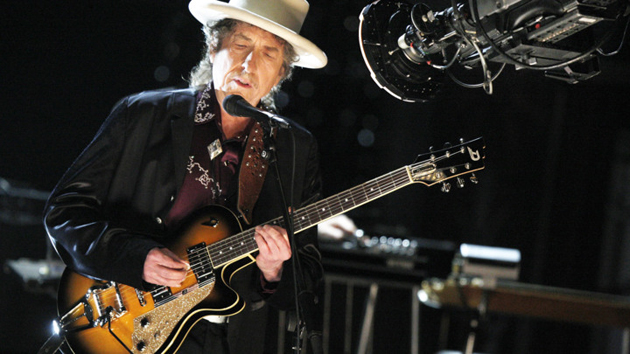 Dylan, 74, is on tour again.
Dylan, 74, is on tour again.
At the age of 74, the legendary North-American musician, Bob Dylan, is returning to Spain to perform in six concerts. It is his tenth visit to the country. He has had such a strong influence on popular culture that he has become a true icon of the twentieth century, where his reputation no longer depends on his commercial success.
The famous grumpy man from Minnesota has been stringing tours together since 1988 in order to maintain his large family and numerous properties. In the hundred-odd concerts that he puts on every year, teenagers can be seen side-by-side their parents, and even grand-parents. What is it about his music that attracts these three generations? And what happened to his faith after his conversion in 1979?
Robert Zimmerman (Duluth, 1941) took his name from the Welsh poet Dylan Thomas, when he arrived in New York in 1961 to visit his agonizing idol Woody Guthrie. That was how his incredible genius was one day discovered by the folk queen Joan Baez, who took a liking to this strange adolescent in a café in Greenwich Village. His first years as a folk singer were closely linked to the movements for social change that took place at the beginning of the 60s. It was a moment in which the “times they [were] a changing”. There were many questions, but many people thought that the answers were “blowin’ in the wind”. He thus became as well known as the likes of Martin Luther King or President Kennedy.
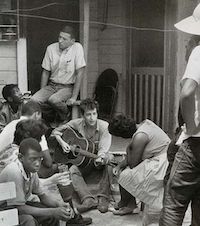 His first years singing folk music are linked to the social changes of the 60s.
His first years singing folk music are linked to the social changes of the 60s.Dylan changed music by taking poetry to folk song. He was not afraid of tackling important subjects through a means of communication which had never before been taken particularly seriously. And he did this with dexterity, genius and elegance. That is why any singer-songwriter today can consider themselves indebted to him. Dylan is more than just a musician. He is an original artist, who has written the majority of his solo work. It is obvious that the Beatles would not exist without the collaboration between Lennon and McCartney, or the Rolling Stones without Mick Jagger and Keith Richards. However, while singers such as Elvis Presley never wrote their own songs, Dylan has almost five hundred compositions to his name. He is the kind of person who works independently, a solitary figure who is extremely protective of his privacy.
NEVER-ENDING TOUR
Bob Dylan has long been a figurehead of counter-culture, although he has, paradoxically, never taken part in politics, which he at one time referred to as the “instrument of the Devil”. His interests focus on other topics including language, the Bible and traditional American culture. He is a profound person, who never smiles and avoids participating in television programmes. Changing and contradictory, his eccentricity has contributed to his legendary status. He is incredibly rich, but he lives like a gypsy, spending more time on tour than in any of his seventeen properties around the world.
What can be expected of his concerts? In theory, anything. Dylan is feared in the industry for his total lack of professionalism. All musicians that accompany him know that he never rehearses, nor has the least idea of what he is going to sing before he steps out onto the stage. He is totally unpredictable…
He has recently taken to playing the piano which is an instrument that he can barely play - and almost without leaving the keys, he goes through his songs and disfigures them. He stays true to his aloof and retiring nature, massacring his songs and making them barely recognizable. But that is all Dylan. You either take him or you leave him; there is no compromise. That is why we, his fans, are incurable. More than a mania, we suffer from some sort of disease or form of masochism. At the end of the day, though, we have been putting up with him this long, we might as well carry on….
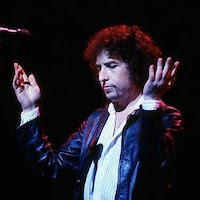 He converted to Christianity in the 70s.
He converted to Christianity in the 70s.The truth is that Dylan reinvents himself every night. I suppose that that is the only thing that allows him to continue having fun on stage, although his audience doesn’t always appreciate it. Then again, with all his imitators, the last thing we need is for him to try to parody himself. He doesn’t play for himself, but against himself, that is why he doesn’t greet the crowd or smile; and his concerts are like our worst exam ever, where he sets the bar as high as possible. They involve bad sound, if possible dirty and thick, with his most nasal voice, so that his most famous songs are almost impossible to recognize.
WHAT HAPPENED TO HIS FAITH?
Since writing my essay about Dylan in 1985, many people have asked me about the faith that he professed in 1979. The truth is that I don’t know what to say. According to biographers like Howard Sounes: “Bob found a way to incorporate religiosity into these new songs without preaching”. He says that he talks about his faith as he did at the time of his conversion. The journalist believes that Dylan still holds openly Christian beliefs, but is now able to express those ideas without prudishness.
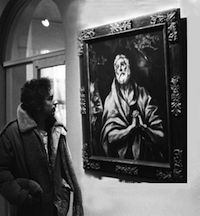 Looking at a paintin of El Greco.
Looking at a paintin of El Greco.Dylan continues to play his so-called Christian songs. At the turn of the century he included a song in his repertoire that he had not sung since the beginning of the 1980s, Solid Rock, which he even accompanies with the Protestant hymn to which the song refers, Rock of Ages. When the journalist David Dewes considered whether Dylan continued to believe, his matter-of-fact conclusion was that he has enough money not to have to sing anything in which he doesn’t believe.
Having returned to the traditions of North-American music – jazz, bluegrass, the more archaic blues and tex mex -, Dylan made a compilation of Christmas songs (Christmas in the Heart) in 2009. In the promotional interview that he gave Bill Flanagan, the journalist observed that he delivered O’ Little Town of Bethlehem “like a true believer”. Dylan replied: “Well, I am a true believer”.
TRYIN’ TO GET TO HEAVEN
His recent compilation of songs by Frank Sinatra (Shadows in the Night) allows us to hear a voice that we hadn’t heard in many years. The brilliant production is reminiscent of the glorious recordings by Nat King Cole, but without their spectacular orchestration. Accompanied by two guitars, a base and a pedal guitar, it barely includes arrangements for wind instruments. It is a laid back and beautiful piece of work in which we see the artist’s maturity.
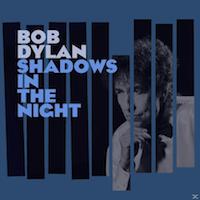 His latest album is a recopilation of Frank Sinatra songs.
His latest album is a recopilation of Frank Sinatra songs.So far on this tour, he has been ending his concerts with Love Sick, a song from the end of the 1990s, found in one of the most honest albums of his career, Time out of my mind (1997). Produced by Daniel Lanois - who also did the impressive Oh Mercy of 1989 -, the result is a dark and tormented album, which seems to point to his fear of nearing death. It is a stark album, which reflects concern at growing old and the loss of love. The songs are somber, but they show us what is really happening in his life for the first time in a while.
A song like Highlands gives us an idea of what it must feel like to achieve fame and fortune, but to feel old and regret the many things that cannot be changed. Dylan murmurs that he is lost, having chosen the wrong path in his confusion. That is why I find his song Tryin’ to get to heaven so moving. In it, he speaks with a weak and contradictory faith, but one which maintains the hope that changed his life at the end of the 1970s.
In that sense, his faith has gained in honesty. Not Dark Yet sounds like the internal monologue of a man at death’s door. His words sound like sighs among shivers. His load seems so heavy, that one fears that he will not be able to carry it. It is true that it is not dark yet, but “it’s getting there”. Provided that we do not stop praying for Dylan, because…
It’s getting dark,
Too dark to see.
I’m feelin’ like I’m knocking on Heaven’s door,
Knock, knock, knocking on Heaven’s door.
Knock, knock, knocking on Heaven’s door.

Las opiniones vertidas por nuestros colaboradores se realizan a nivel personal, pudiendo coincidir o no con la postura de la dirección de Protestante Digital.
Si quieres comentar o